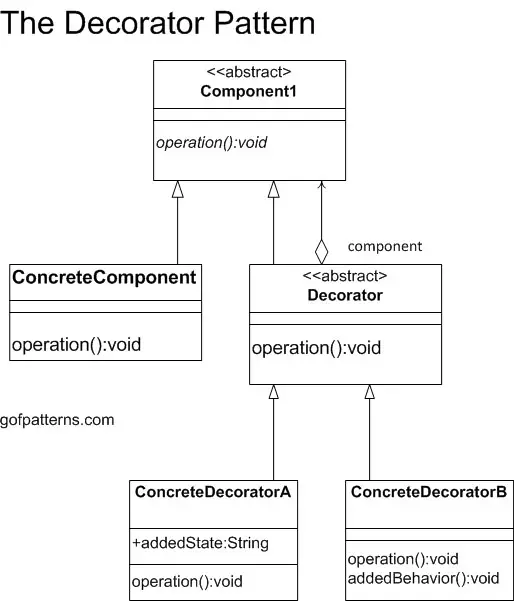The Decorator Pattern: Role and Function in Structural Patterns
- Introduction:
In the domain of software design, structural patterns serve as blueprints for arranging classes and objects to form larger structures while ensuring efficiency and maintainability. Among these, the Decorator Pattern stands out, offering a dynamic mechanism to extend the functionality of objects without altering their structure. By acting as a flexible alternative to subclassing, the Decorator Pattern emphasizes enhancement rather than modification. - Role of the Decorator Pattern:
The primary role of the Decorator Pattern is to augment or refine the responsibilities of an object dynamically. It provides a mechanism to wrap individual objects with new behaviors, enabling a step-by-step addition of functionalities.
2.1. Primary Roles:- Enhancer: The Decorator Pattern enriches objects with additional functionalities, allowing for layered augmentations.
- Substitute for Subclassing: It offers an alternative to the permanent nature of subclassing, enabling functionalities to be added or removed at runtime.
- Function of the Decorator Pattern:
The Decorator Pattern encapsulates the original object inside an abstract wrapper interface, allowing both the original object and the new decorators to be treated uniformly.
3.1. Key Components:- Component: An abstract interface defining the object that can have responsibilities added to it dynamically.
- ConcreteComponent: A class that implements the Component interface and represents the object to which additional responsibilities can be attached.
- Decorator: An abstract class that implements the Component interface and serves as a base for all concrete decorators. It maintains a reference to a Component object and defines an interface that conforms to Component's interface.
- ConcreteDecorator: Concrete classes that extend the Decorator class, adding state or behavior to the component they decorate.
3.2. Workflow:- A ConcreteComponent is instantiated.
- A ConcreteDecorator is wrapped around the ConcreteComponent, either replacing the original reference or being treated as a new object.
- Calls to the Decorator pass through to the underlying ConcreteComponent, with the Decorator adding its behavior before or after as required.
- Advantages of the Decorator Pattern:
- Flexibility: Enhancements can be made to individual objects, allowing for granular customizations without spawning numerous subclasses.
- Modularity: New functionalities are contained in individual decorators, promoting a clean, modular approach to enhancement.
- Scalability: Multiple decorators can be stacked or chained together, enabling a dynamic combination of behaviors.
- Conclusion: Within the tapestry of structural patterns, the Decorator Pattern emerges as a paramount tool for dynamically augmenting the behavior of objects. Rather than being bogged down by the rigidity of subclassing, it champions a fluid, modular, and scalable approach to object enhancement. By enabling objects to be dressed with additional responsibilities at runtime, the Decorator Pattern fortifies the principles of extensibility and granularity in software design. It is, without a doubt, an indispensable asset for developers aiming to craft adaptable and maintainable software architectures.
Description:
The Decorator pattern enables you to add or remove object functionality without changing the external appearance or function of the object. It changes the functionality of an object in a way that is transparent to its clients by using an instance of a subclass of the original class that delegates operations to the original object. The Decorator pattern attaches additional responsibilities to an object dynamically to provide a flexible alternative to changing object functionality without using static inheritance

Benefits of Decorator Pattern:
The following lists the benefits of using the Decorator pattern:
- More flexibility than static inheritance.
- Avoids feature-laden classes high up in the hierarchy
- Simplifies coding because you write a series of classes, each targeted at a specific part of the functionality, rather than coding all behavior into the object
- Enhances the object's extensibility because you make changes by coding new classes.
When To Use Decorator Pattern:
You should use the Decorator pattern when:
- You want to add responsibilities to individual objects dynamically and transparently, that is without affecting other objects
- You want to add responsibilities to the object that you want to change in the future
- When extension by static sub-classing is impractical.
Decorator Pattern Java Code